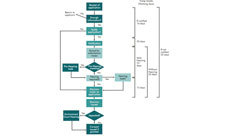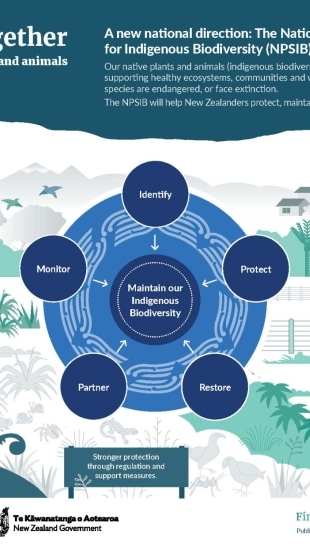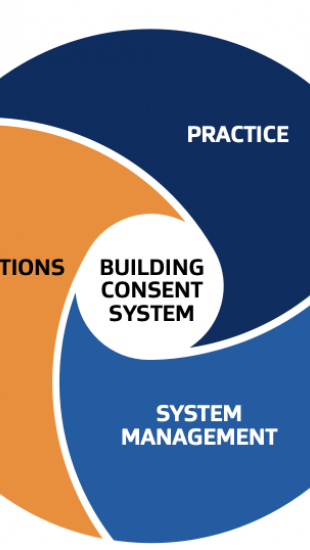Updated Changes to RMA on the way

The key changes recommended by the Select Committee include:
• Significantly scaling back proposed regulation-making powers (being one of the more controversial elements of the Bill)
• Removing mandatory strike-out of submissions on resource consents
• Restricting the proposed fast-track process to controlled activities requiring land use consent under a District Plan
• Allowing applicants to ‘opt-out’ of a fast-track route if they want to
• Introducing a 10 working day statutory processing timeframe for boundary activity exemptions in line with the new fast-track process
• Clarifying that written approval is only required from the owners (not occupiers) of the property to which a boundary rule applies
• Introducing a 5 year lapse period for unimplemented boundary activities and deemed permitted activities, to stop these from remaining ‘live’ indefinitely if not implemented
• Removing the requirement for consent authorities to specify special circumstances warranting notification of resource consent applications
• Renaming the ‘National Planning Template’ as ‘National Planning Standards’
• Requiring consent authorities to consider offsetting proposed by the applicant when determining resource consent applications.
The report released yesterday includes a revised version of the Bill, which was prepared by the Select Committee after considering a 500-page departmental report by the Ministry for the Environment, as well as more than 700 submissions by members of the public, interest groups, and businesses.
Quicker, faster and cheaper consents is the aim of the massive overhaul of the Act which Housing Minister Nick Smith is leading:
The 180-page Resource Legislation Amendment Bill comprises 40 changes contained in 235 clauses and eight schedules. It makes changes to the Resource Management Act 1991, the Reserves Act 1977, the Public Works Act 1981, the Conservation Act 1987, the Environmental Protection Authority Act 2011, and the Exclusive Economic Zone and Continental Shelf (Environmental Effects) Act 2012.
Key changes include:
· National planning templates to standardise planning documents, improve consistency, and reduce timeframes
· Faster plan-making processes, including truncated timeframes and new collaborative and streamlined options. The Amendment Bill would also give decision-makers the right to strike out submissions for plans, policy statements and consents on specific grounds
· A requirement for councils to invite iwi to form an iwi participation arrangement setting out how the council will engage with iwi in the plan making process
· A new 10 working day time limit to determine simple fast track consents, and the ability to waive resource consent requirements for marginal or temporary non-compliance where effects are minor

10-day fast track process for simple applications
Problem
The RMA’s resource consent framework currently takes a ‘one size fits all’ approach to non- notified applications. The standard 20 working day process applies to a wide range of activity types that vary significantly in terms of scale and complexity. The result is a lack of proportionality. While the 20 day process is appropriate for the majority of applications, it can result in undue time and financial cost for applicants seeking consent for the simplest proposals. A corresponding burden falls onto councils, who have to undertake a full assessment even when considering simple, straight for ward applications.
For simple applications, such as a minor house extension over site coverage and height, and other controlled activities under the relevant plan, a shorter process would be more suitable and better reflect their scale and environmental impact.
Proposal
The proposal will introduce a truncated 10 working day consent process for simple applications. Controlled activities (not including subdivisions) and activities defined in regulations would be subject to the new ‘fast track’ process. There would be a new regulation making power to specify types of activities, or criteria for what would constitute a simple activity, which must be processed in the shorter timeframe. Applications for these activities would have to meet certain quality criteria before being considered for the fast track process, including being clear and complete, and accompanied by any necessary written approvals.
The consent authority would have 10 working days to:
· accept or reject the application
· make the notification decision (if needed)
· decide whether to grant or decline consent.
If a hearing is necessary or the consent authority decides that the proposal should be fully or limited notified (including due to special circumstances), the application would cease to be fast-track.
This change will improve the proportionality of the consenting system by introducing a process for getting permission that better reflects the scale and environmental impact of simple activities. This is part of the wider objective of delivering a user-focused consenting framework that is efficient in terms of both time and cost. These time and costs benefits would be delivered immediately for both applicants and councils, and the regulation making power will allow the benefits of the fast track process to be expanded to other types of activities if it is seen to be effectively meeting these objectives.
A risk of the proposal is that applicants may decide to scale back their proposals, leading to a large increase in controlled activities. This has the potential to significantly increase council workloads.
Although simple proposals can be easily identified in practice, it is very challenging to set specific legislative criteria for what constitutes a simple application. If the criteria are too narrow, too few proposals will be subject to the fast-track process and the policy’s intent will be undermined. If the criteria are too broad, overly complex applications will be subject to the fast-track process, which could stretch council resources beyond capacity and even compromise the quality of decision-making.
There is also a risk that the quality of decision-making will be compromised if decisions are made hastily in order to avoid exceeding the statutory timeframes and incurring penalties under the Resource Management (Discount on Administrative Charges) Regulations (the discount regulations). This issue is considered to be the most significant shortcoming of the proposed fast-track process.
Alternative options
One day process
An ultra-fast consent process for simple applications. This was considered to be unworkable as it would put a disproportionate amount of pressure on council resources for the time savings involved.
Simple 35% and Council list
This option would require every consent authority to publish a list of rule breaches that qualify for a 10 working day fact-track process. The regulations would specify that each consent authority’s list must be broad enough to ensure that at least 35% of all land use consents meet the fast-track criteria and are processed within 10 working days. No fast-track process would be specified in the RMA or regulations. Instead, the process itself would be entirely at the discretion of each individual consent authority.
This alternative approach would enable each consent authority to develop a fast-track that is tailored to its specific circumstances. Enabling each council to define their own eligibility criteria reflects the fact that each plan is unique and individual consent authorities are best placed to determine what combination of rule breaches constitute a simple application. It is important to note that this may not be the case after plans are made more consistent through the national template
Conclusion
The proposal is the preferred option as it is considered the most likely to provide consistency across all councils while being less onerous than some alternative proposals and still providing an adequate amount of time for quality decision-making. It has simple entry (and exit) criteria, reduced information requirements for lodgement and standardised reporting through a prescribed decision template. If councils respond to the new proposal by avoiding the use of controlled activity status in their plans, the regulation making power retains the ability of central government to address this behaviour if considered necessary. If regulations are developed, it will be appropriate to set out criteria to allow for monitoring of decision quality and to check whether criteria for ‘simple proposals’ have been set at the right level.
This proposal will contribute to the objective of proportional and adaptable resource management processes by ensuring that consenting processes for simple applications are able to be scaled to reflect the specific circumstances.
Streamline the notification and hearing process
Problem
Decisions on whether to non-notify, limited notify or publicly notify are made on almost all resource consent applications, subject to the tests set out in the RMA. These tests have two difficulties that contribute to uncertainty for applicants, councils and other parties. Firstly, the public notification test for resource consent applications is based solely on the adverse environmental effects of the proposal and does not take into account whether the relevant plan anticipates the proposed activity. This means that district and regional plans, which have been subject to full consultation process prior to becoming operative, can be ‘re- litigated’ at the consent stage. Secondly, the thresholds for limited notification and public notification overlap. This means that, in some cases, the council’s decision on the form of notification is difficult and poses legal risks.
A further problem is that the scope for making submissions and advancing appeals against consent decisions is very wide. Submissions may be made on any aspect of a notified application, and any person who makes a submission can subsequently appeal the decision. This undermines the purpose of notification and seeking submissions, which is to give decision-makers useful, focussed input. Submitters have the false impression that they can influence any aspect of a proposal, and decision-makers and applicants have much more work in managing that input and, in some cases, mounting rebuttal evidence.
Additionally, any person who makes a submission has a right to appeal the decision to the Environment Court, even where their original submission was unrelated to the effects of the proposal. This gives submitters a lot of power to oppose developments, as even the threat of such an appeal (and the delay it creates) creates costs and other difficulties for applicants.
The scale of this problem has increased over time, though is difficult to quantify as the system does not record the different decisions applicants might make because of uncertainty in the system or the threat of appeal. The current process requires council time and resources to justify decisions made around notification because of the potential threat of legal action through judicial review, even for relatively minor consents.
Proposal
Clarifying the notification process and involvement of affected parties
The proposal will clarify the notification provisions for certain types of applications and set out a new stepped approach for determining whether to notify an application. This will clarify when public notification is mandatory and when it is precluded for certain types of applications (controlled activities, boundary activities, subdivisions and residential activities that are not non-complying activities). A further clarification will require the adverse effects of activities to be assessed in the context of the objectives and policies of the relevant plan.
In addition, the proposal will refine consideration of affected parties for limited notification of district land use activities (eg, housing, commercial and industrial activities and agriculture). This is appropriate as the effects of land use activities are most prominent in the immediate surroundings and diminish away from the site.
This change will create the following two-step test for all district land use applications:
· Public notification test: councils examine the environmental effects for both adjacent and non-adjacent land.
· Limited or non-notification test: councils examine the effects on people who own or occupy adjacent land.
In addition to this new approach to notification, the proposal will:
· require councils to identify the specific adverse effects that bring them to decide to notify an application;
· record those specific effects and include them in the public notice; and
· require submissions to be focussed on those effects.
Regulation making powers
The proposal will also include a new regulation making power to enable regulations that can specify applications which must be processed without public notification, and restrict the persons who may be considered affected by that activity to certain types of named person (identified in the regulations).
This proposal will be particularly relevant in residential zones by simplifying the council’s decision-making process by removing the need to assess effects and justify decisions regarding more peripheral parties for certain specified activities.
Narrow submitters’ input to reasons for notification
If submissions on notified resource consent applications do not meet certain criteria, they must be struck out. Submissions must:
· be related to the reasons for notification;
· be supported by evidence;
· have a sufficient factual basis;
· if pertaining to be independent expert evidence, be made by a person with suitable experience and qualifications.
If a submitter’s submission is struck out, no Environment Court appeal against the consent decision will be available.
The proposals will focus input from submitters on the most important matters and remove the threat of submissions and appeals on trifling or irrelevant matters while ensuring that those with genuine and relevant input retain full rights of participation and appeal.
The proposed changes will also avoid unnecessary time, cost and uncertainty implications for activities that are broadly consistent and/or anticipated by the applicable plan. The changes will provide a clear assessment process if the RMA, regulations, or plans specify that public or limited notification is precluded.
In residential zones in particular, but for district land use activities generally, this proposal will simplify the council’s decision-making process on notification by removing the need to assess effects and justify decisions regarding more peripheral parties. It will also reduce the risk of judicial review and avoid it from any party other than specified parties. This will benefit the majority of applicants for consents for land use activities that ‘fit’ with the relevant plan, including residential housing developments, commercial and industrial activities, and help councils by relieving them of the current assessment requirements.
Risks of the proposal include that it will increase complexity for the process of determining who can be involved in resource consent processes. This may cause additional costs in the short term for both councils and applicants until practice is established that reflects the new notification framework.
Better information about the investment decisions that private individuals, developers and organisations make as a result of the current system would help to fill gaps in knowledge about applicant behaviour in the consenting system. There also appears to be a gap in knowledge about the actual and perceived constraints of the system. For example, one difficult experience of consenting a proposal in one area of the country may play out quite differently in another but the applicant will take a conservative approach as a result of the first experience.
Much of the information coming out of the National Monitoring System (see Monitoring and Evaluation section below) will greatly assist in establishing trends in both council and applicant behaviour that will inform decisions about how to achieve the right level of involvement in resource consent applications.
Alternative options
Altering thresholds and definitions
Changing the threshold for notification of applications – the requirements in the RMA that determine notification of the public or individuals could be changed. However, changing thresholds will still not address the need for certainty in the system around notification. This option was therefore not considered appropriate for addressing the problems identified around notification.
Changing the definition of an affected party – the definition of an affected party could be changed to include criteria other than the environmental effects occurring against that person. This is not considered appropriate because the legislation is intended to control effects and other types of assessment would not be appropriate.
Changing the activity classes for types of consent applications – a different structure or hierarchy of consent type could be introduced which would then have specific notification requirements attached to them. This option could assist to clarify notification but would involve more structural change in the legislation that would then have other consequences for the consenting system. This would be undesirable when there are better methods for clarifying notification requirements.
Conclusions
These proposals are considered to contribute towards the objective of making Resource Management decisions more robust and durable. Participation and engagement in consenting processes will be more proportionate to the activity and will support decisions made up front in plan-making processes that have themselves involved significant consultation and engagement.


· Support for subdivision and residential development, including permitting some subdivisions and restricting third party appeals against many subdivisions and residential activities. The Amendment Bill would also require district and regional councils to plan for growth
· Narrower notification requirements for specified types of resource consents
· Changes to the Public Works Act to increase some heads of compensation for property owners and tenants following acquisition and to speed up some aspects of the compulsory acquisition process
· The insertion of “the management of significant risks from natural hazards” as a section 6 matter.
Parliament will start debating the changes next week but they still have a long way to go to become law.
Require fixed remuneration for hearing panels and consent decisions issued with a fixed fee
Problem
Consent authorities can recover the actual and reasonable costs associated with processing resource consents (section 36 of the RMA). The way councils recover these costs is generally done one of two ways, either by setting fixed fees for applications or by charging an initial lodgement fee or deposit. Initial lodgement fees or deposits are more widely used than fixed fees.
Where fees are fixed by councils, the applicant has certainty upfront that the entire cost of the processing of their application has been covered. However, where an initial lodgement fee or deposit is charged, additional processing charges and disbursements are also passed on to the applicant, generally based on the hourly rate of officers. There is no certainty as to whether the final charge to the applicant will be more or less than the initial lodgement fee.
As a result of the different approaches to fee setting, the total cost of the consenting process is not clear for applicants in most council areas. Compounding this lack of certainty is the price of obtaining resource consents also varies significantly across the country due to councils’ different cost structures and the extent to which councils subsidise consent costs.
Independent commissioners deciding notified consent applications and plan hearings are usually paid on an hourly or day-rate basis. Hearing costs are on-charged to applicants, with no limit on the total costs which may be incurred. Consequently there are insufficient incentives for commissioners and councils to run the hearing process as cost-effectively as possible.
Proposal
The proposal will introduce provisions that require consent authorities to fix certain consent charges in accordance with new regulations. New regulation making powers would be introduced to facilitate the fixed fee requirements. These regulations would provide the framework under which consent fees must be set, but consent authorities would still be responsible for determining the actual fees.
There is scope for the regulations to allow for additional charges beyond the fixed fees in certain circumstances. For example, an additional fee could be charged for every additional information request. The fixed fee provisions would not prevent councils from determining the extent to which they use rates to subsidise the consent process.
The proposal will also require councils to pay independent commissioners on a fixed fee basis, and to set the applicant’s fee for consent and plan hearings before they start. A new regulation making power will enable councils to be required
to:
· pay commissioners on a fixed fee basis for each consent or plan hearing (eg, based on complexity and number of submissions) and when an applicant requests for a commissioner to hear their objection to a decision (section 357B of the
RMA)
· fix the fee for each hearings process before it begins, for example after the close of submissions.
It will be up to each consent authority and local authority to determine its own remuneration policy for commissioners including the amount they will actually be paid. However, the regulation may set out an optional method for calculating their fixed fees. The regulation may also set out a method for fixing the fee for the hearings process overall. This could be based, for example, on the complexity of the application and/or the number of submissions received.
This change will not apply to the payment of local government elected members as their fees are set under the Local Government Act2002.
Along with providing more certainty to applicants, requiring the setting of fixed fees will likely incentivise councils to improve their performance and efficiency and commissioners to run hearings more efficiently. Consent authorities (in the case of plan hearings) will be
encouraged to manage the process more efficiently (for example, estimating costs, managing input from specialists, legal advice, staff time, venue costs). The fixed fee will give applicants more certainty about the overall cost of the hearings process before it starts.
The change will complement other existing provisions aimed at speeding up the hearing process. These include commissioners allowing evidence to be taken as read (existing provision) and the pre-provision of expert evidence (this provision came into effect in March).
Both these changes will enable consent authorities and local authorities to more accurately estimate fees for notified resource consents and plan changes which will significantly increase certainty for applicants and reduce the overall costs.
Councils will be required to develop a policy for how they will calculate the fixed fee for commissioners and the fixed fees before each hearing starts. There may be a reduction in charges through fee-setting at the local authority level, and there will be improved predictability for applicants, cost-containment pressure on local authorities and a more strategic approach to identification and recovery of costs). However, the risks are that applicants may pay more or less in fees than the actual cost, it could make it difficult to get good commissioners if paid on a fixed-fee basis, and commissioners may cut hearings short, which will reduce opportunity for stakeholder participation at plan hearings
Alternative options
Central government to fix consent processing fees
Central government could provide better direction by issuing guidance on the methods of calculating the fixed fees. This option was discarded as it would impinge on business practices and cost recovery practices of local authorities.
Fixed fees for notified consent applications only
Require councils to introduce fixed fees for notified consent applications. Fees could be based on categories of complexity, consent types or thresholds. The incentives of this option would be the same as the proposal on commissioners and councils to minimise hearing costs. There would be greater certainty up-front for applicants but less ability for councils to base the fee on the complexity of the application and the number of submissions received. There is also a greater chance of councils setting fees higher than they need to be to compensate. Given that notified consents make up only 5% of total consents, this option would have limiteimpact.
Conclusion
The proposal is the preferred option because it would result in a reduction in charges through fee-setting and increases certainty of costs for applications from the outset. Decision makers are incentivised to hearing matters efficiently. Costs for similar applications (in size, complexity and number of submissions) would be aligned based on the same factors.
Clarify the scope of consent conditions
Problem
Resource consent conditions are an essential tool for decision-makers to manage the environmental effects of activities. A considerable body of case law has established key principles that conditions must adhere to in order to be valid. However, the potential scope and nature of conditions, as set out sections 108 and 220 of the RMA, is very broad.
The RMA does limit the scope of conditions, but also specifies that conditions may cover any matter. This contributes to uncertainty around the scope of conditions that can be imposed, which gives rise to confusion and litigation between councils and applicants. This also means that applicants are often unaware of the sorts of conditions that may be placed on their consent and the subsequent cost of compliance. In relation to housing affordability there is a need to ensure consent conditions contribute to, or at least are not a barrier to, improving the supply of housing.
Proposal
The proposal is to limit the scope of consent conditions to reflect existing case law by requiring that consent conditions imposed by councils must be directly connected to either:
· the provision which is breached by the proposed activity or
· the adverse effects of the proposed activity on the environmentor
· content that has been volunteered or agreed to by the applicant.
This amendment will improve certainty by providing a legislative requirement for what are already well-established principles of common law. There are no policy trade-offs involved and there is little potential for unintended consequences. This provision is well-aligned with the Ministry’s objectives of delivering a user-focused system with appropriate scope and mix of protection, use and development of resources.
The risks include that:
· The Ministry does not hold any information as to whether there is actually a wide spread problem regarding ultra vires conditions being imposed or whether this is simply a perceived problem. As such this proposal may have minimal impact if the majority of conditions already meet the proposed criteria.
· Conditions are often the factors that enable the granting of a resource consent. The changes may give consent authorities (and applicants) less flexibility to design consent conditions that achieve sustainable management and enable consent to be granted.
· Often conditions are offered by the applicant to address possible submitter concerns and to proactively offer broader community benefit. There has been public concern, particularly from councils, that limiting the scope of conditions may limit the flexibility and quality of decisions made. The proposal may result in a statutory block on such conditions which may give rise to statutory difficulties and losses for the community.
Alternative options
No alternative options were considered for this proposal.
Conclusions
Overall, the benefits of the proposal are considered to outweigh any potential risks. The proposal will codify best practice and provide greater certainty to resource consent applicants, as well as to consent authorities, on the scope of consent conditions.
Enable objections to be heard by an independent commissioner
Problem
Currently, applicants and submitters can request that notified resource consent applications are heard by an independent hearings commissioner instead of the consent authority. However, parties do not have the ability to request an independent decision-maker for objections to decisions (under sections 357-357D) – so objections to the council’s decisions are heard by councillors by default.
There is a risk of actual or perceived bias if a council is considering an objection relating to one of its own decisions or a decision that one of its officers has made.
Proposal
The proposal will enable the following objections to be considered by an independent hearings commissioner instead of by the consent authority:
· an objection made if an officer of the consent authority refuses to grant a resource consent (sections 104B and104C)
· an objection regarding a decision on an application for a change or cancellation of a condition of a resource consent (section127)
· an objection regarding a decision on a review of the conditions of a resource consent (sections 128 to132)
· an objection regarding a decision on an application to vary or cancel a condition specified in a consent notice (section221).
Hearings commissioners would be provided with the power to call for further evidence, beyond the reports received from a hearing and pre-hearing meeting, if it will help them to make a decision on the objection. Costs for this process would be charged to the applicant.
Benefits will fall on the applicant, who will be able to request that their objection be heard by an independent commissioner. It is assumed that this process will be more cost-effective than lodging an appeal to the Environment Court for those occasions when the applicant is seeking decision-making independent of the council.
According to the 2012/13 RMA Survey of Local Authorities, there were 317 objections and
239 appeals in 2012/13 resulting from over 340,000 consent decisions. Objections and appeals decreased by one third compared with 2010/11 but we do not know whether this represents a long-term declining trend. However these numbers are not huge and thus the contribution of this reform to the net benefit of the package of consenting reforms is likely to be small.
Alternatives
Low cost tribunal
A discussion document released by the Ministry for the Environment – Improving our Resource Management system – released in February 2013, contained a proposal for a ‘low cost tribunal’ as a way of addressing the policy problems stated above. The new tribunal was intended to be accessible at low cost and would have covered all aspects of the consenting process, including pre-application engagement. The tribunal was to hear appeals on proposals up to a certain scale and was intended to deliver decisions more swiftly than the Environment Court.
The proposal was not supported by submitters, who were concerned that a new process would make the system more complicated to navigate, and who pointed out that mediation already provided a low cost process to deal with less complex issues. In response to this feedback, the Ministry developed the current proposal.
Conclusions
The option initially preferred was the low cost tribunal as proposed in the 2013 consultation document. This was dismissed for the reasons outlined above. The current proposal was developed to address the issues raised in the submissions, along with the package of proposals offering more flexibility for the operation of the Environment Court (P 4.2) by extending the powers of judges and commissioners sitting alone. These options do not require the development of a new body, and so are considered to avoid some of the risks of overcomplicating the system that were raised by submitters while still providing efficiency gains and removing the perceived bias.
This proposal will provide an alternative option for objection proceedings, which will contribute to the increased flexibility and adaptability of processes and decision-makers.
Simplify charging regimes for new developments by removing financial contributions
Problem
Currently the only restrictions around the use of financial contributions under the RMA are that the purpose and level of contribution must be specified in a council plan. Both a financial contribution and development contribution (under the Local Government Act) may be charged for a single development; although they must be for different purposes. There is considerable variation and overlap between how different councils charge financial and development contributions. This has resulted in confusion and concerns about councils’ charging under the two regimes; especially when contributions are charged under both regimes for the same development. To provide greater clarity on the use of development contributions, amendments were made to the Local Government Act. These came into force in August 2014, restricting the use development contributions.
The overlap between the two charging regimes may be confusing and could lead to perceptions of councils double charging. However, information on the size and scale of this problem is currently not available.
The original intent of financial contributions was to:
· provide a fair and reasonable way to finance the extension or development of bulk services or other infrastructure costs as a result of development
· provide a fair and reasonable way to ensure the adequate provision of reserves (including esplanade reserves/strips other than in relation to subdivision) to meet the community needs generated by the project
· deal with potential adverse effects on the environment that cannot be directly avoided, remedied, or mitigated. This includes ensuring positive effects to offset any adverse effect.
Development contributions were introduced in the 2002 Local Government Act as a regime that better met the financial management requirements that councils are required to follow. Points 1 and 2 above can be achieved through development contributions (providing appropriate polices are developed) which can be taken for reserves, network infrastructure and community infrastructure under section 199 of the Local Government Act. Development contributions can only be charged in accordance with a development contributions policy that is developed through the Annual Plan or Long Term Plan process.
Proposal
The proposal is to repeal the ability to charge a financial contribution under the RMA. It would still be possible to offset environmental effects (if volunteered by the applicant) under the RMA with conditions on consents for delivering specific environmental mitigation.
Restricting or removing financial contributions will make it clear that the costs of servicing new growth should be met through development contributions and make charging more certain and transparent for applicants.
It is expected that the removal of the ability for local authorities to charge financial contributions will result in a drop in local authority revenue of an estimated $10 million per year. Where a financial contribution is related to the provision of infrastructure or reserves, some local authorities will be able to mitigate the removal financial contributions through making greater use of development contributions under the Local Government Act 2002. The narrower scope of development contributions means that it is likely the lost revenue will not be fully offset.
One of the sections being repealed by this proposal is the only place in the RMA where environmental offsetting is mentioned and could lead to some confusion that the ability offset environmental effects is being removed as part of this proposal. The reforms will clarify how environmental offsetting is considered under the RMA. The removal of financial contributions will mean that environmental offsetting will only be possible on a voluntary basis. The research that MfE has undertaken around how regional councils use financial contributions found that there gional councils preferred to use conditions to avoid or manage the actual adverse effects rather than receive money to offset the effect. The ability for voluntary environmental offsetting under the RMA is not affected by this proposal.
It is possible that more resource consents will be declined if an applicant does not agree to the offsetting requirements or where the offsetting offered by the applicant is insufficient to justify the consent being granted. Councils will not have the ability to impose conditions that take land or cash without the applicant’s agreement. In practice, applicants sometimes agree to offsetting conditions (eg, planting, or habitat protection on another site) that are reasonable and necessary to ensure the consent is granted.
The RMA provides the ability for councils to require esplanade reserves, access strips and esplanade strips to, amongst other matters, enable public access to or along any sea, river, or lake. The removal of financial contributions will not affect the power ability for councils to acquire esplanade reserves, esplanade strips or access strips but may affect their ability to fund the acquisition of such instruments.
Unlike development contributions, the purposes for which financial contributions can be charged are not solely related to servicing growth. For example, a submission on the NES for forestry discussion document mentioned that at least one council charges financial contributions for forestry to cover the cost of maintaining the roads used by the forestry trucks. For this example, the proposal is not changing the provisions around the ability to impose works and services conditions on resource consents. Works and services conditions could be applied where there a direct relationship between the forestry vehicles and the increased maintenance required for the roads. However, it is likely to be difficult to determine the exact effect that the forestry vehicles have on roads where there are multiple road users. Under this type of scenario the full amount of the financial contribution may not able to be replaced.
It is recommended that the changes to financial contributions do not take effect for a period of five years. This transitional period will provide territorial authorities with an opportunity to amend or prepare their development contributions policies as part of their Long Term Plan processes. Some territorial authorities may have to prepare or amend their development contribution policy to ensure that they can still recover the costs of providing for new growth from any development that creates a demand for new infrastructure.
Alternative options
Remove the ability to take financial contributions for infrastructure purposes
It would be possible to restrict the use of financial contributions so that they could not be used to cover the costs of maintaining, upgrading or providing infrastructure. This option would remove some of the existing overlap between the two charging regimes. It would not completely remove the overlap or confusion around the use of financial contributions that currently exists. The ability to take land for reserves will still be possible under both regimes. Part of the current confusion stems from the variability in how the different councils use the two charging regimes and this variability is likely to continue while the both charging regimes are able to be used for the same purpose.
While this will assist by providing some clarity and improve the differences between the two charging regimes, it does not completely resolve the confusion and overlap between the two charging regimes.
Limit the purpose of financial contributions to environmental offsetting
Another option is to take development contributions for the offsetting of environmental effects. One consideration is therefore to retain the ability for financial contributions under the RMA as this is where there is no overlap between the two charging regimes.
It is considered that just limiting financial contributions to environmental offsetting will not be sufficient, as some upgrading or provision or infrastructure would be justified under a guise of offsetting environmental effects. This option may not have any significant changes in current charging practices.
Merge financial contributions and development contributions under one Act
A third option is to merge financial contributions and development contributions under one piece of legislation. However, this option is not considered appropriate due to the different purposes of the two statutes. The Local Government Act (LGA) does not seek to manage environmental effects and the purpose of development contributions in the LGA is clearly defined to cover the capital costs of servicing growth. Between 1991 and 2002 there was only the ability for councils to charge financial contributions under the RMA. Development contributions were introduced as this was not working. The requirement for a direct causal linkage on resource consent conditions can be too restrictive to fund the future growth requirements.
Remove the ability to have a financial contribution under the RMA where there is a development contribution for the same purpose (infrastructure or facility)
The final option is to remove the ability to have a financial contribution under the RMA where there is a development contribution for the same purpose. However, this option would not remove the confusion that exists between the two charging regimes and would achieve no practical purpose. Section 200 of the Local Government Act 2002 already excludes to the ability to take a development contribution to when a financial contribution has been taken for the same purpose. There would still be variation as to how different councils use the two charging regimes recover the costs of servicing growth under this option.
Conclusions
The proposal removes any confusion around the two charging regimes. It clarifies that it is the place of development contributions to recover the costs of providing the necessary infrastructure to service growth. The restrictions that exist around the use of development contributions under the LGA make it clear under what circumstances development contributions can be applied by councils. This should lead to greater consistency around how councils meet the costs of providing for growth.
This proposal will contribute to achieving the outcome of reduced duplication across resource management legislation.
Consent exemption for low impact activities and minor rule breaches
Problem
Some resource consents are required because of breaches to plan rules that are very minor and of a technical nature. In other instances, a proposal may breach a rule where the only potential adverse effects are extremely localised and the affected neighbour has provided written approval. In these cases, the environmental effects are essentially little different from those associated with permitted activities and the objectives and policies of the plan will not be compromised.
In such cases the consent decision approves an activity that was very nearly permitted – yet the applicant must proceed through the normal resource consent application process. They may be faced with costs that are not proportionate to the proposal, and delays that seem unnecessary given the minor or technical nature of the rule breach.
Proposal
Two proposals have been put forward to balance the lack of proportionality around simple applications in the resource consenting system. They are:
· Where a marginal or temporary breach of a rule occurs, the consent authority will have the discretion to give notice to the applicant that the activity is to be treated as a permitted activity.
· Where a proposal requires resource consent because of the breach of a boundary rule (where a structure breaks a rule in relation to its distance from, or dimensions in relation to, a boundary) and the written approval has been obtained from the affected neighbour, the consent authority will be required to treat the activity as permitted.
Once considered to be a permitted activity, resource consent will not be required under either of the above situations.
These changes will remove, as much as possible, the cost and time burden of obtaining resource consent for the simplest of infringements. These types of infringements account for a significant proportion of resource consent applications.
The proposed exemption powers are intended to improve the proportionality of how councils allocate their resources within the consenting framework. The reduced workload will enable councils to focus resources on processing more substantive applications. The proposed requirement for councils to fix their fees (P 3.5) will also support the objectives of this proposal. If councils are obligated to fix fees for simple consents, they are likely to spend less time processing them.
The proposed changes are expected to reduce the number of consents required by about 2000—9000 a year, or between 6-26% of all consent applications made during 2012-2013.7
229. There is some concern about the charging mechanisms that would be available for councils to explicitly provide for cost recovery if an exemption is granted, the risk being that costs might be cross-subsidised by ratepayers. In addition to this, councils may decide to put up fees for other types of consent if they can no longer charge for simple consents (which may serve in part to subsidise the running of business units).
There are risks around the possibility that permitting technical and minor breaches will lead to a ‘creep’ effect and may also contribute to the development of cumulative effects and have unintended impacts on permitted baselines.
It is possible that some consent authorities will choose not to exercise their exemption powers, or to do so very infrequently, due to a perceived risk of judicial review by third.
Alternative options
Councils specify exemptions
The RMA could be changed to allow councils to exempt activities without the need to make and record decisions to that effect. This would remove significant time and cost burden to applicants and councils and might be cheaper and faster than tracking exemption decisions on paper. However, there is a risk that fraudulent use of the power would be untraceable.
Remove the need for consent for any temporary or controlled activities
This would also remove significant time and cost burden to applicants and councils. However, it would not allow for case-by-case decisions to waive consents to be made on the basis of effect. It may also have the unintended side-effect of encouraging councils to avoid using controlled activity status in plans.
No ability for applicants to apply
At the policy development stage it was intended that applicants would not be able to apply to a consent authority for an exemption. Instead, the consent authority would exercise its discretion to grant an exemption only when considering the proposal through some other application, such as the resource consent, building consent or project information memorandum (PIM). This remains the case for exemptions for minor and technical breaches, however an application process has been proposed for boundary activities in order to ensure that potentially affected neighbours have the opportunity to provide input into the process.
Non-regulatory options
It is not possible to provide for exemptions through non-legislative means. Guidance and decision template could be produced to encourage consent authorities to cut all non- necessary reporting when dealing with boundary infringements that have the neighbour’s written approval. This is likely to deliver significantly fewer time and cost savings.
Conclusions
This proposal is largely fit for purpose and is considered to be an appropriate means of delivering time and cost efficiencies while improving the proportionality of the consenting system. The proposal would remove time and financial costs for the applicant if their proposal is the same as or similar to a permitted activity. The reduced workload would mean that councils could focus resources on the processing of more substantive applications.
This proposal will contribute significantly towards the outcome of scaling RM processes and costs to reflect the specific circumstances.
+++++++++++++++++++++++++++++++++++++++++++++++++++++++++++++++++++++++++
The need for speed
Proposed changes to the RMA consenting process
Over recent years, public frustration about delays by councils in processing consents has been well documented in media headlines. Applicants complain that the costs and time delays associated with getting consent for minor breaches are often completely disproportionate to the effects of the rule being breached.
The 2009 Resource Management act (RMA) amendments focused on streamlining the consenting process for large projects. the Resource Legislation amendment Bill focuses on the need to speed up and simplify the processing of consent applications at the other end of the spectrum.
While the rationale for the proposed amendments to speed up the processing of minor consents is sound, the success of the changes will depend on councils being adequately resourced to process applications more quickly.
Low impact activities/minor rule breaches
Two key amendments aim to make consenting minor proposals less laborious by treating the following activities as permitted activities in certain circumstances:
a Boundary activities; and
b Minor activities where there is a marginal or temporary breach of RMA requirements.
These types of small applications constitute a surprisingly large proportion of applications. It is estimated that the proposed changes will reduce the number of consents processed by by approximately 2,000 to 9,000 consents a year. These figures equate to between 9% and 26% of all consent applications made during 2012-2013 (Regulatory Impact Statement for the Amendment Bill).
Under the proposed amendments, councils are directed to treat certain ‘boundary activities’ as permitted activities where:
a Resource consent is only required because of the application of one or more boundary rules; and
b The affected boundary is not a public boundary; and
c Where the affected party (i.e. a neighbour) has provided written consent.
While there is no ability to appeal, or lodge a section 357 objection in relation to boundary activity applications, applying the criteria in paragraphs (a) to (c) above should not be difficult or contentious in most cases.
Councils will also have a discretion to treat minor activities as permitted activities where:
a The activity would be a permitted activity except for a ‘marginal or temporary’ non-compliance with RMA requirements; and
b Any adverse effects are no different in character, intensity or scale than they would be in the absence of the marginal or temporary non-compliance; and
c Any adverse effects of the activity are less than minor.
Again, the underlying rationale for treating minor infringements as permitted activities is certainly sound. However, there are uncertainties around what might be determined to be ‘marginal non-compliance’ given that this new term is not defined. The requirements to determine whether the adverse effects are the same character scale or intensity as would be without the marginal or temporary non- compliance, and whether the adverse effects are less than minor, have the potential to make the exercise of councils’ discretion under the proposed provision ripe for challenge.
Since there is no right of appeal against such deci


















